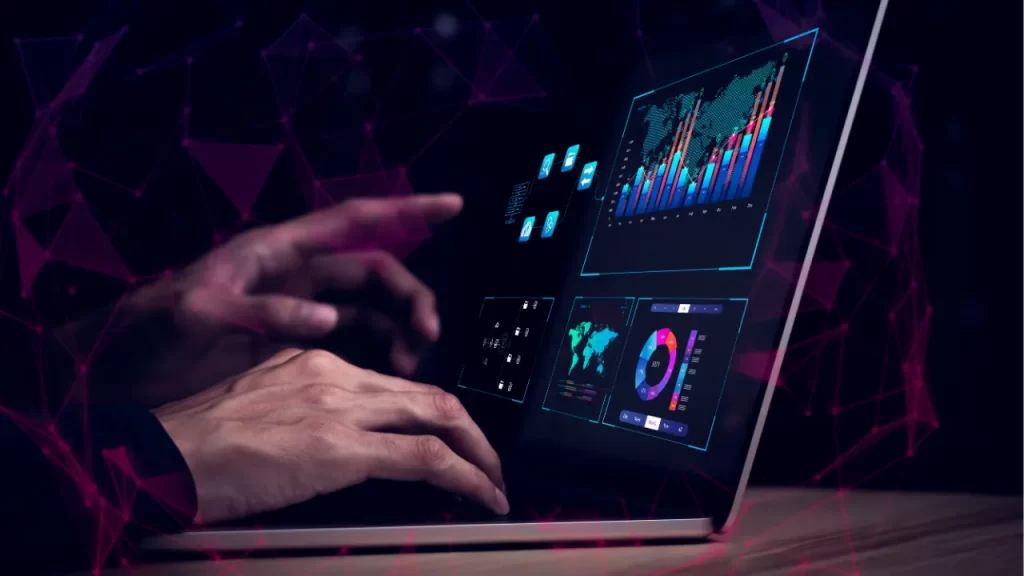In the era of Industry 4.0, technological advancements are transforming asset management practices.
One such innovation is the concept of Digital Twins—virtual replicas of physical assets that provide real-time insights and predictive capabilities.
From improving operational efficiency to minimizing downtime, digital twins are revolutionizing how organizations manage their assets.
In this post, we’ll explore what digital twins are, how they work, and why they are becoming a game-changer in asset management.
What Are Digital Twins?
A Digital Twin is a virtual representation of a physical asset, process, or system. It uses real-time data and simulations to monitor, analyze, and optimize asset performance.
Digital twins are created using data collected through IoT sensors, advanced analytics, and machine learning, creating a two-way connection between the physical and digital worlds.
Key components of a digital twin include:
- Sensors and IoT devices to collect real-time data.
- Data analytics and AI to process and interpret the data.
- Simulation models to predict performance and identify potential issues.
How Digital Twins Work in Asset Management
Digital twins enhance asset management by creating a dynamic, interactive model of assets that updates in real time. Here’s how it works:
- Data Collection: Sensors embedded in physical assets gather real-time operational data such as temperature, pressure, and performance metrics.
- Data Integration: This data is fed into the digital twin, creating a virtual model of the asset that mirrors its real-world counterpart.
- Analysis and Simulation: AI and machine learning algorithms analyze the data, simulate scenarios, and predict future outcomes.
- Decision-Making: Insights generated by the digital twin enable proactive maintenance, performance optimization, and efficient resource allocation.
Benefits of Digital Twins in Asset Management
- Real-Time Asset Monitoring: Digital twins provide a 360-degree view of asset performance in real time, enabling businesses to detect anomalies and inefficiencies instantly.
- Predictive Maintenance: With predictive capabilities, digital twins can forecast equipment failures, allowing for timely maintenance and reducing costly downtime.
- Improved Operational Efficiency: By simulating different scenarios, digital twins help optimize operations, reducing energy consumption and increasing asset utilization.
- Enhanced Decision-Making: Digital twins provide actionable insights, helping businesses make data-driven decisions about asset management strategies.
- Cost Savings: By extending asset lifespans, minimizing unplanned downtime, and optimizing resources, digital twins lead to significant cost reductions.
- Sustainability: Digital twins contribute to sustainability by reducing waste, energy consumption, and emissions through optimized asset performance.
Applications of Digital Twins in Asset Management
- Manufacturing: Digital twins are used to monitor and optimize production equipment, simulate factory layouts, and improve manufacturing processes.
- Energy Sector: In renewable energy, digital twins help manage wind turbines, solar panels, and energy grids by predicting performance and reducing operational risks.
- Healthcare: Hospitals use digital twins to track medical equipment, predict maintenance needs, and ensure compliance with regulatory standards.
- Smart Cities: Digital twins model infrastructure such as bridges, roads, and buildings, helping city planners optimize maintenance schedules and improve public safety.
- Transportation and Logistics: Digital twins optimize fleet management, monitor vehicle performance, and reduce fuel consumption.
Challenges in Implementing Digital Twins
While digital twins offer significant benefits, there are some challenges to address:
- High Implementation Costs: Developing and deploying digital twins require substantial investment in IoT devices, AI, and analytics platforms.
- Data Management Complexity: Handling large volumes of real-time data requires robust storage and processing capabilities.
- Integration Issues: Integrating digital twins with existing asset management systems can be complex and time-consuming.
- Cybersecurity Risks: With vast amounts of sensitive data involved, ensuring cybersecurity is crucial to prevent breaches.
- Skilled Workforce: Managing digital twin systems requires specialized knowledge in AI, IoT, and data analytics..
The Future of Digital Twins in Asset Management
The adoption of digital twins is expected to grow rapidly, driven by advancements in IoT, AI, and big data analytics. Future trends include:
- AI-Driven Insights: Leveraging AI to enhance predictive capabilities and automate decision-making.
- Integration with Blockchain: Using blockchain for secure data sharing and asset tracking.
- Immersive Experiences: Combining digital twins with augmented reality (AR) for training and troubleshooting.
- Sustainability Goals: Utilizing digital twins to monitor and reduce the environmental impact of assets.
As these technologies evolve, digital twins will become indispensable tools for businesses seeking to optimize asset management and achieve operational excellence.
Conclusion
Digital twins are transforming asset management by bridging the gap between the physical and digital worlds.
With their ability to monitor assets in real time, predict failures, and optimize performance, digital twins are enabling businesses to reduce costs, improve efficiency, and meet sustainability goals.
Ready to embrace the power of digital twins? Partner with Synergy Evolution to integrate cutting-edge asset management solutions into your operations.








